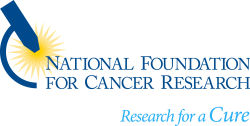Early detection of ischemic injury, though difficult to achieve, is becoming increasingly critical to the proper utilization of new interventional procedures. Experts note that although Magnetic Resonance Angiography can evaluate vessel anatomy and patency, the method cannot characterize tissue viability.
Rockland Technimed’s Tissue Viability Imaging Agent is able to assess the quality and function of the underlying tissue; it can differentiate reversible or irreversible tissue injury.
Rockland’s technology is based on the normal process of cellular regeneration of adenosine triphosphate with concomitant conversion of oxygen to water.
The company’s Oxy-17 is formulated using a stable, non-radioactive isotope of Oxygen that can be used to detect hypoxic, but still viable tissue. After Oxy-17 is absorbed by the cell and converted to water it perturbs the proton signal and creates a negative contrast on the MRI. Each injury zone has a different rate of oxygen uptake so each zone can be differentiated. Oxygen-starved hypoxic tissue consumes a larger percentage of oxygen than normal tissue; nonviable necrotic tissue will not take up the Oxy-17 nor produce any water.
Conventional (T2 weighted or spin-spin relaxation) MRI used with this technique can detect the difference between viable tissue and regions in which cell death has occurred. Oxy-17 can cross an intact blood brain barrier, making it a promising technology for brain imaging.
Rockland believes that Oxy-17 may prove useful for imaging areas of hypoxia in cases of myocardial ischemia, stroke, and abdominal visceral ischemic injury. Other potential uses for future investigation include mapping the epicenter in epilepsy, categorizing tumor oxygenation, cancer staging, and assessing the efficacy of radiation and chemotherapy.
Currently there is no cheap, effective, straightforward way for doctors to determine the exact location of stressed (dying) tissue in the brain or heart without invasive procedures or costly radiotracer based PET imaging. The company’s target customers are hospitals, HMO’s, PPO’s and free standing imaging clinics. The potential to increase the overall demand for diagnostic, preventive and follow-up screening is significant in this latent application sector. Rockland will use strategic marketing partners to satisfy demand.
Editor’s Note: Rockland Technimed interview is not for soliciting funds here, criteria for which is detailed in their ppm document..
Categories: Blog, cancer, COMPANIES, Executive Summary, Member Spotlight, Video

